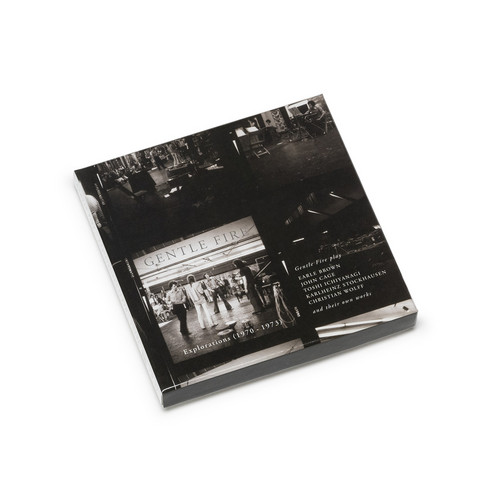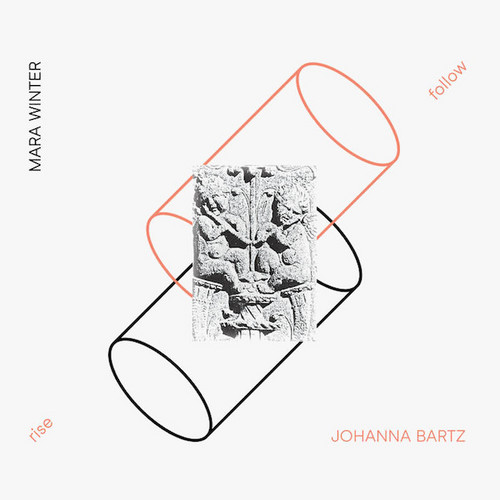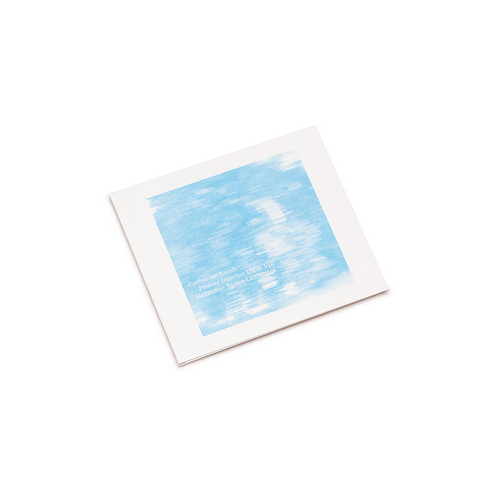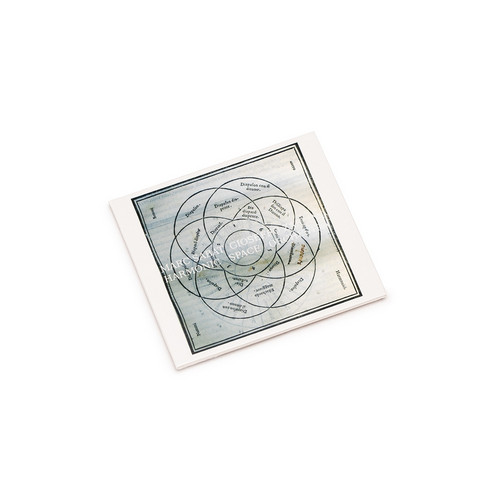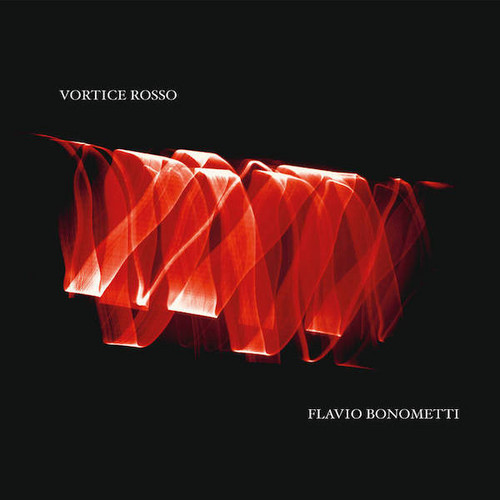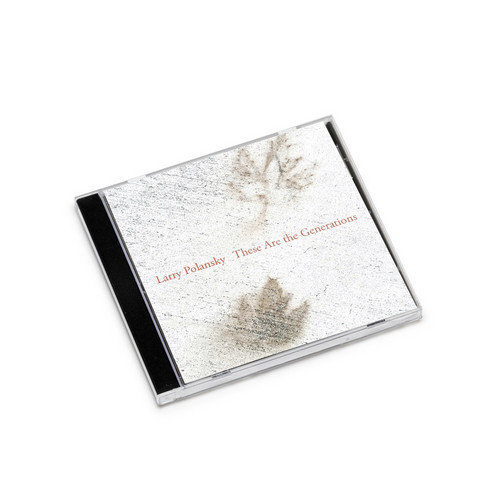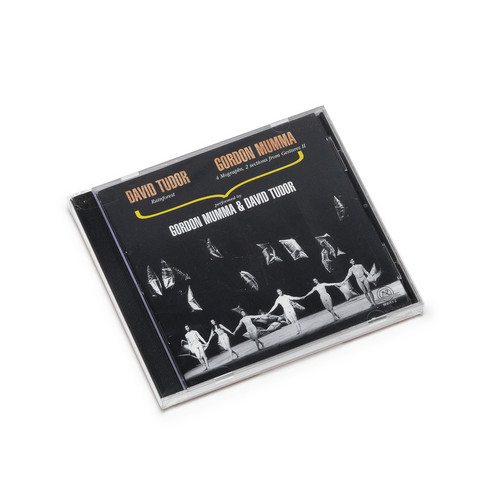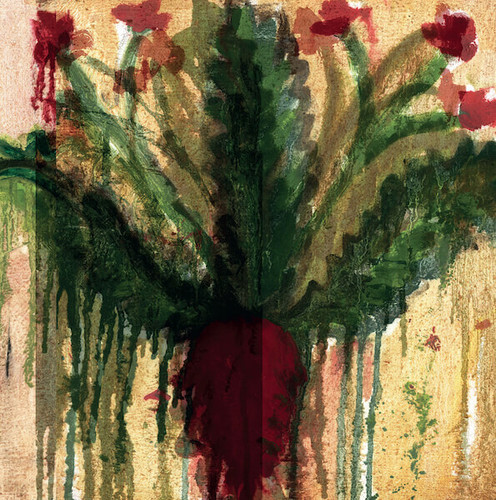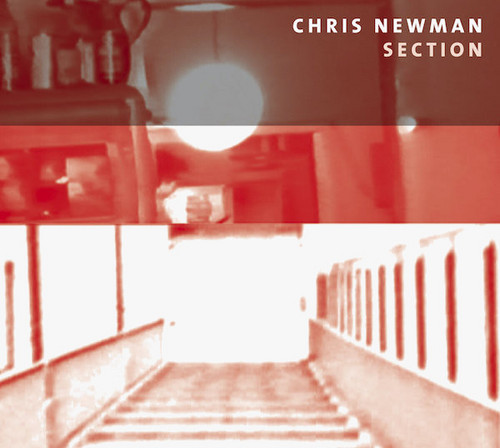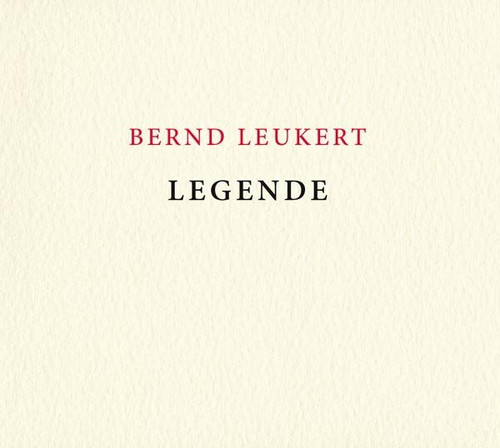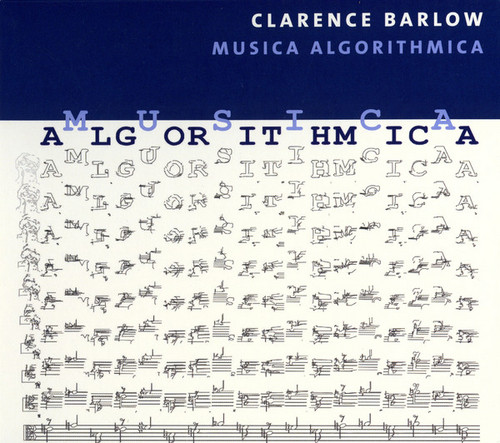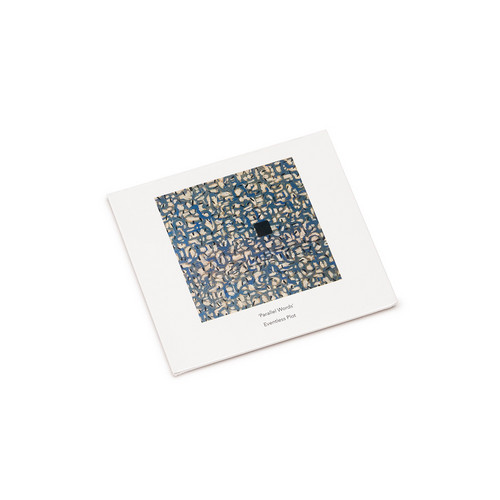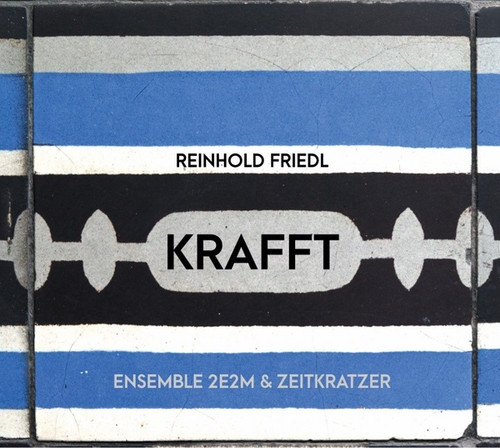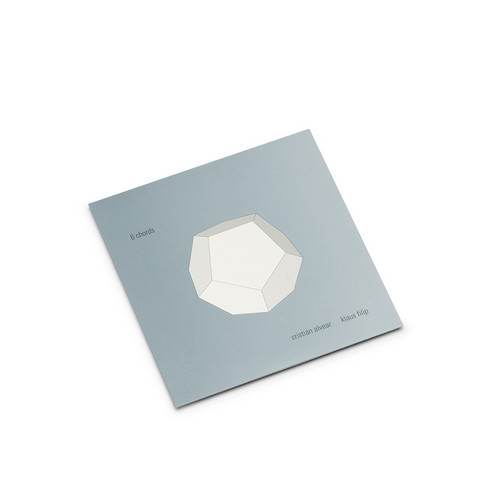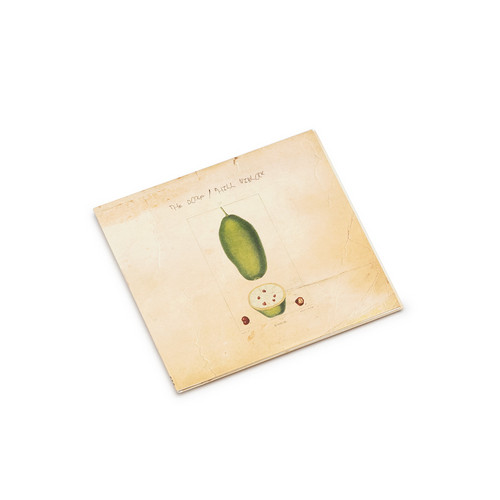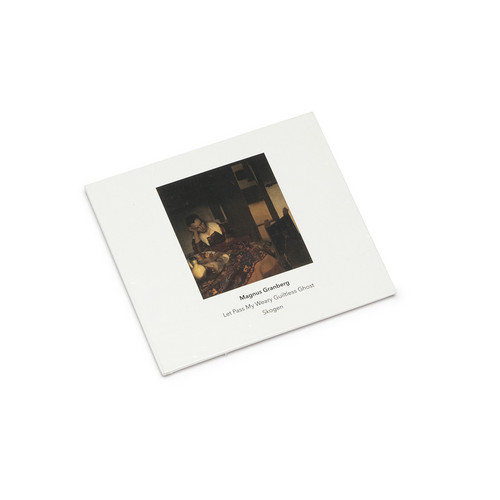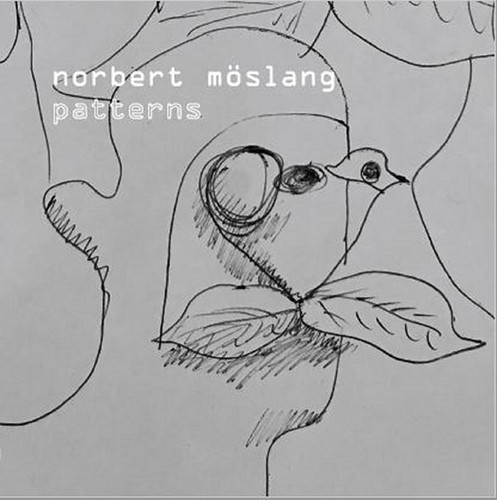Explorations (1970 - 1973) 3CD Box
The first ever survey of the seminal British experimental music collective, Gentle Fire, "Explorations (1970 - 1973)" offers a remarkable and previously unavailable glimpse of their activities during the early 1970s.
Rise, Follow
* Edition of 200 * A composition for two bass Renaissance flutes. Performed by Mara Winter and Johanna Bartz. Rise, follow is a dialogue of long tones played by two bass Renaissance flutes, featuring subtle but persistent changes over the duration of one hour. It is performed in one sitting without interruption. The composition adopts the principle of instrumental ‘consort-style’ playing in Europe during the 16th century: a family of similarly pitched and constructed instruments performing polyp…
Prisma Interius VII & VIII
* Edition of 500 * In Catherine Lamb's Prisma Interius series the unpredictability of the outside articulates the field of perception through precise bandpass filters, while acoustic instruments and musicians guide the unfolding of its harmonic space. A series of nine pieces exploring the potential of the Secondary Rainbow synthesizer, an instrument developed in 2016-2017 with Bryan Eubanks, that uses the live environment outside the performance space as a noise generator for basic subtractive s…
Gioseffo Zarlino - 2015/2019
* Edition of 500 * Marc Sabat's Gioseffo Zarlino is "the third in a series of pieces inspired by ideas in the history of music theory, which I seek to experience and unfold in a sounding world" (taken from the liner notes by the composer). In the piece, unfolding cyclically over 70 minutes, voices, strings, harp, and flute, weave through each other exploring a novel tonal space developed by the Renaissance Italian Composer-Theorist, Gioseffo Zarlino in 1558 and reinterpreted in the 21st Century …
Vortice Rosso
Putojefe Records is proud to present Vortice Rosso, the first album by Italian composer Flavio Bonometti: a tumultuous journey through the languages of the avant-garde masterfully synthesized in 12 pieces of contemporary classical. After a brilliant career as a violist at La Scala Theatre in Milan and in many other orchestras, Flavio Bonometti gave up the stage to dedicate himself exclusively to his music. The tracks of Vortice Rosso, produced and recorded over the last 10 years, are born from t…
These Are the Generations
The title of this recording has multiple meanings for its composer, Larry Polansky (b 1954). These are the generations... is a translation of the Hebrew title for the second work on the program, Eleh Tol'd'ot, the first words of the thirty-fifth verse of the first book (B'rey'sheet) of the Torah. Beyond referencing Polansky's Jewish heritage, the phrase reflects this particular collection of works on several levels.
The compositions included stem from different generations of Polansky's musical …
Music of David Tudor and Gordon Mumma
This historic recording features the first-ever release of the two earliest surviving recordings of David Tudor's seminal work, Rainforest. Sandwiched in between are six keyboard works by Gordon Mumma in recordings featuring the composer and his close collaborator, Tudor. Together, these works constitute a fascinating and historically important document of the 1960s avant-garde in America.
In early 1968, Merce Cunningham created a new dance whose apparent impetus was Colin Turnbull's The Forest …
Kutra Bégulma - Unfinished Altar
* Limited Edition Green vinyls + insert * Ars Subtilior (14th century) and the Noise: the two inspirations of Christophe Guiraud which are like two rivers which are woven in a writing of great power. The French young composer is the link between the most accomplished scholarly music and some radical aspects of noise. Born in Toulouse mid-seventies, he settles in Brussels - which becomes the crossroads of a continuous creation. Currently works and has been collaborating since several years with …
Sexo Puro
* 2021 stock * Nobody who attended the first performance of Sexo Puro is ever likely to forget it. On that October afternoon, the conciliatory power of this work, which Maria de Alvear sees as a “meditation on inner goodness”, came into sharp collision with the irreconcilable powers that sometimes gather at contemporary-music festivals.
It was probably not even the theme of sexuality that so profoundly disturbed a part of the audience at the 1998 Donaueschingen Festival, even though it is seldom…
Section
* 2021 stock * The structures of Chris Newman's music are apparently simple, like his music pictures: large, thick dots of notes, but a lot of space in between: "The raw and the cooked" (Roland Barthes). He himself likes to cook well and with pleasure. Just his lamb chops, for example. He only puts them in a hot pan with oil; there is also chard, just pulled out of the water, but also more complicated things: coq au vin or bœuf bourguignon.His music has a strong physical structure, is quasi carn…
Legende
* 2021 stock * Acousmatic events dispense with performers. There are no musicians, even at public concerts. The audience is able to follow what is emanating from the loudspeakers with eyes closed and still not miss anything. What it hears is composed, and demands the same attention as any other kind of music listened to on a stereo system or via headphones. It is worth remarking this fact because so many people are no longer able to hear things without seeing something as well in video clips or …
Im Klang Sein
*2020 stock* To be within the sound - not to expect anything - no beautiful moments - no big emotions - no artfulness- but to follow, from note to note, a sound that carries the music, a sound within the sound: it changes slowly at a tempo that suggests a movement at a great distance, one that might leave our gravitational field, in which gravity is reduced and which is not even always recognized because of its slowness.
This "sound-space", which touches the cosmos but is at the same time percep…
Angelus Novus
*2021 stock* Angelus novus is the third opera by Madrid composer Jorge Fernández Guerra. This time, he draws on a selection of texts by Walter Benjamin, which he uses to create a dialogue of sorts between a male character and a female character, who could be an alter ego or perhaps an angel.
The dialogue appears to transpire during the final moments of the character’s life, which may be reminiscent of Benjamin’s final moments at the Spanish border as he fled the Nazis.
Angelus novus premiered a…
Musica Algorithmica
*2021 stock* This CD is the first release to present such a large number of works by Clarence Barlow. This fascinating spectrum of his life's work, thrown into relief by the complexity of his pieces, illustrates his career as a composer. It is a great honour for us to publish his oeuvre. - Maria de Alvear
Musica Algorithmica is a double CD with music by the composer Clarence Barlow, residing for many years in Cologne, Germany, currently professor of composition in Santa Barbara, California. The …
Parallel Words
With Parallel Words, Eventless Plot compose as a true collective, crafting an album that drifts at the intersection of chamber music, electroacoustic experimentation, and subtle jazz inflections. The trio - Vasilis Liolios, Aris Giatas, and Yiannis Tsirikoglou - devise sound worlds marked by contradiction and hybridity. Across the album’s three substantial tracks, instrumental timbres and electronics run alongside each other, oscillating between a sense of tranquil detachment and mounting intens…
KRAFFT
KRAFFT for orchestra was composed in 2016 as a commission of the French State, and was premiered in Paris and Marseille, France. The composition has a similar kind of metric structure as String Quartet No.3: all instruments play in rhythmic unison throughout. KRAFFT is an ironic-onomatopoetic wrong spelling of the German term "Kraft", meaning "power" or "force". The listener should feel exposed to a sonic undertow. The notion of huge power and force is often connected to the existence of clandes…
6 Chords
Guitarist Cristián Alvear was born in 1979 and lives in Santiago, Chile. Active on the international contemporary/experimental music scene, he has since 2010 released numerous recordings on labels in various countries. Musician and programmer Klaus Filip was born in 1963 and resides in Vienna, Austria. ppooll, the software he developed, is used regularly by many improvisers, including Filip himself.
This album is comprised of a single track of 40 min., 58 sec., divided into six parts. Klaus Fili…
Baobab
Co-released with Umland Records, Germany. On one night in 2019, The Dorf (German for "village") took a heavy dose of the music of Phill Niblock. The impact on the musicians, gathering to play a double-length version of Niblock's Baobab and (in a second set) three "Dorf" tunes, was deep. It felt a bit like going to church -- a truly spiritual experience. At first, the audience did not believe the announcement that the "drone" piece would last for 46 minutes. Afterwards, their reactions showed the…
Let Pass My Weary Guiltless Ghost
Let Pass My Weary Guiltless Ghost marks another chapter in Magnus Granberg’s ongoing exploration of the borderlands between improvisation and quietly radical chamber composition. Granberg draws from his background in saxophone and deep engagement with traditions spanning classical, folk, and the avant-garde, establishing a musical language marked by reserved urgency and gentle abstraction, performed by his dedicated ensemble Skogen.
The recording is structured to allow strings, clarinet, piano, …
Patterns
Soprano saxophone player Sascha Armbruster, oboe player Kelsey Maiorano, clarinetist Toshiko Sakakibara, trumpeter Jens Bracher, trombonist Stephen Menotti and tuba player Janne Jakobsen gather together and record the compositions written by Norbert Moslang. “Patterns” is a new record on “Bocian” label – this album is a mix of academic avant-garde, experimental music, free improvisation and avant-garde jazz. The musicians join together different kinds of motions, expressions, styles and passions…
